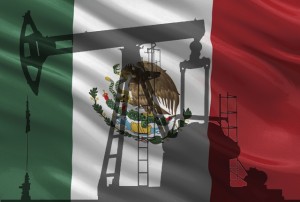 The implementation of Mexico’s energy reforms has sent electricity producers packing to the National Solar Energy Association, until recently an organization comprised of mostly academics and scientists.
The implementation of Mexico’s energy reforms has sent electricity producers packing to the National Solar Energy Association, until recently an organization comprised of mostly academics and scientists.
“Now we’re receiving a lot of industrialists who come to us with questions,” says Alberto Valdés Palacios, president of the 35-year-old professional association.
For all their drawbacks, the reforms pay more than lip-service to the idea of promoting solar energy. They coerce newly approved corporate power generators into using the renewable sources directly derived from Father Sun.
Energy Secretary Pedro Joaquin Coldwell projects Mexico obtaining one-fourth of its electricity from renewable sources by 2018. That is the year the new private wholesale producers must meet the Clean Energy Certificate requirement of using 5 percent in their mix.
The requirement is conceived, among other things, to help Mexico decrease its dependence on fossil fuels to meet international commitments to alleviate climate change by curbing greenhouse gases.
Under the 2012 General Climate Change Law, one of the first of its type in a developing nation, Mexico pledged to reduce its emissions by 50 percent from 2000 levels by 2050. In 2015, it promised to cut greenhouse gas and black carbon releases 25 percent below business-as-usual by 2030.
With the world (including Mexico) having already used up half of its hydrocarbon reserves, the incentives and agreements should not even be necessary. Anyone with half a brain can calculate the reserves’ potential is insignificant compared with that of two weeks of solar light: A square meter of the earth’s atmosphere constantly receives an average of 1,376 watts from the sun.
Even though 30 percent of the rays are dispersed before reaching the surface, the remainder is still several thousand times more than the world’s consumption of all forms of energy.
In addition to taking advantage of the passive solar energy capacity for heating and cooling, other ways of using the sun’s energy without resorting to hydrocarbons are through converting it to electricity with photovoltaics, windmills, ocean waves, geothermal, biomass, hydraulic, and waste-produced methane waste generation.
Blending in electricity from any of these technologies will qualify Mexico’s new commercial wholesale generators to receive Clean Energy Certification. Unfortunately, so will electricity produced in nuclear reactors–the least economical and most dangerous of conventional power plants, with no connection to solar sources.
After some seven years of jockeying around with the energy reforms, the Energy Secretary has set October 2015 as the time to accept casino online bid tenders that will be adjudicated to the new wholesale producers in January.
Among other parties, the National Solar Energy Association is working to improve terms of the reforms, given that many lawmakers who approved them still don’t understand them.
Chief among civil society’s demands for change is inclusion of a clause providing explicit protection of Mexico’s distributed power and net-metering mechanism, instituted in 2007. The mechanism allows micro-generators who create their own renewable energy-based electricity to contribute it to the national transmission grid and receive credit to offset their light bills.
This option exists in all but three U.S. states, as well as in numerous other industrialized and developing nations. Belgium was among the first to institute it in 2004. In Latin America and the Caribbean, Brazil, Chile, Guatemala, Dominican Republic and Barbados join Mexico in allowing it.
Incorporating the juice from backyard solar panels and windmills into the national grid provides more jobs for solar industry technicians and consultants than centralized commercial power plants do.
However, that is far from the only importance of securing the arrangement for posterity. Most obviously, it saves on the family budget.
Also, and perhaps most convincingly, it allows for energy independence and decentralization, making it the most democratic form of power control. It means power to the people.
While linking up with other energy producers and consumers in defending access to the grid, advocates of net-metering and distributed generation from renewable energy sources should also keep in mind that the most substantial contribution people can make to avoiding the mounting woes of climate change is simply to consume less energy from fossil fuels.
Talli Nauman, United States, is a U.S.-based journalist who has worked with the Americas Program for nearly two decades. She writes on environmental issues.



